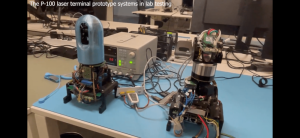Can the DJI O4 Air Unit Pro Replace an Action Camera on FPV Drones?
Welcome back, drone enthusiasts! In today’s discussion, we’re diving into an exciting comparison between the brand-new DJI O4 Air Unit Pro and the popular DJI Osmo Action 5 Pro. This video aims to uncover whether the O4 Pro can truly take the place of a dedicated action camera when used with First-Person View (FPV) drones. Let’s get started!
Side-by-Side Footage Comparison
To kick things off, we’ll quickly assess footage captured from both cameras. Positioned side by side, the O4 Air Unit Pro displayed on the left, and the Osmo Action 5 Pro on the right allow us to evaluate quality directly.

Manual Settings Insights
Initially, I flew with manual settings to optimize clip appearance. The recordings were done in 4K at 50 frames per second with a D-Log M color profile, employing a shutter speed of 1/100 and an ISO range of 100 to 800. I opted not to fix the ISO since I wanted the cameras to adapt through varying light conditions. Although I didn’t set a specific white balance, both cameras maintained the same settings.
Stabilization was disabled for subsequent stabilization in post-production with Gyroflow. The D-Log M footage was converted to Rec.709 and color graded uniformly. Comparing the footage before and after grading, I found both cameras produced similarly exceptional results. The O4 Air Unit Pro occasionally edged out the Osmo Action 5 Pro, especially in bright sunlight, where both cameras produced stunning footage.
Automatic Settings Performance
Next up, we switched to automatic settings for shooting—all features were set to auto: white balance, shutter speed, and ISO.
The O4 Air Unit Pro presented a slightly warmer image, alongside more glow when facing direct sunlight, whereas the Osmo Action 5 Pro footage came off as a bit dull, despite being set to 10-bit Normal. Although both setups looked satisfying, the O4’s color vibrancy stood out, which is critical for FPV enthusiasts seeking an appealing aesthetic.
Low-Light Capture Analysis
This is where the differences emerged most starkly. Shots taken shortly after sunset showed that the Osmo Action 5 Pro outperformed the O4 Air Unit Pro in detail and sharpness, highlighting the efficiency of its processor. Despite the O4 boasting a significantly higher bit rate of around 115 Mbps compared to 66 Mbps for the Osmo, the latter delivered superior low-light quality.
Benefits of the O4 Air Unit Pro
- Performance Enhancement: Removing an action camera lightens the load on your drone, resulting in increased speed and agility.
- Image Quality: The O4 offers image quality comparable to that of well-regarded action cameras.
- Manual Control in Post-Production: Manual settings paired with post-processing tools like Gyroflow allow you to significantly enhance your FPV footage.
- Less Equipment Anxiety: With one unit handling both the FPV feed and footage capture, you’ll have fewer concerns during intense flying.
Potential Drawbacks of the O4 Air Unit Pro
- Redundancy: An additional camera can serve as a backup in unforeseen recording mishaps or corrupted files.
- Frame Compatibility: Depending on the drone frame, you might face visibility issues regarding the props in the shot.
- Locked Settings Challenges: Fixed camera settings may limit adaptability in varying light conditions.
- Frame Rate Constraints: If a higher frame rate is desired for a smoother feed in your goggles, it may compromise cinematic quality.
Final Verdict
The question remains: can the DJI O4 Air Unit Pro truly replace an action camera? For the vast majority, the answer is a resounding yes. In essence, it offers an incredible alternative for FPV pilots without needing extra gear. It encourages creative, adventurous flying, enabling unique capture opportunities. If you enjoyed this video, please consider liking and subscribing for more drone-related content. This is Mike from Drone Supremacy—keep flying high, and I’ll see you soon!













